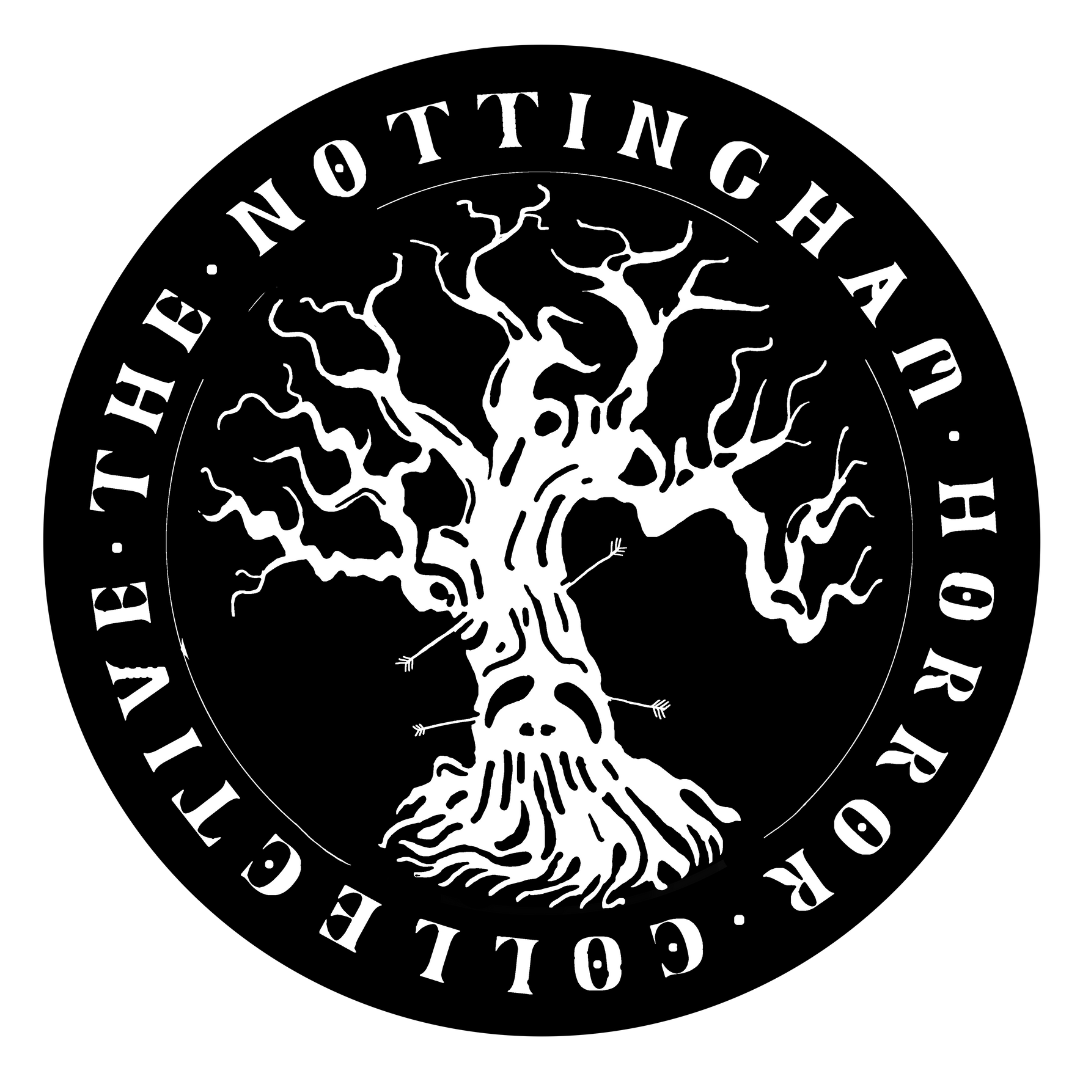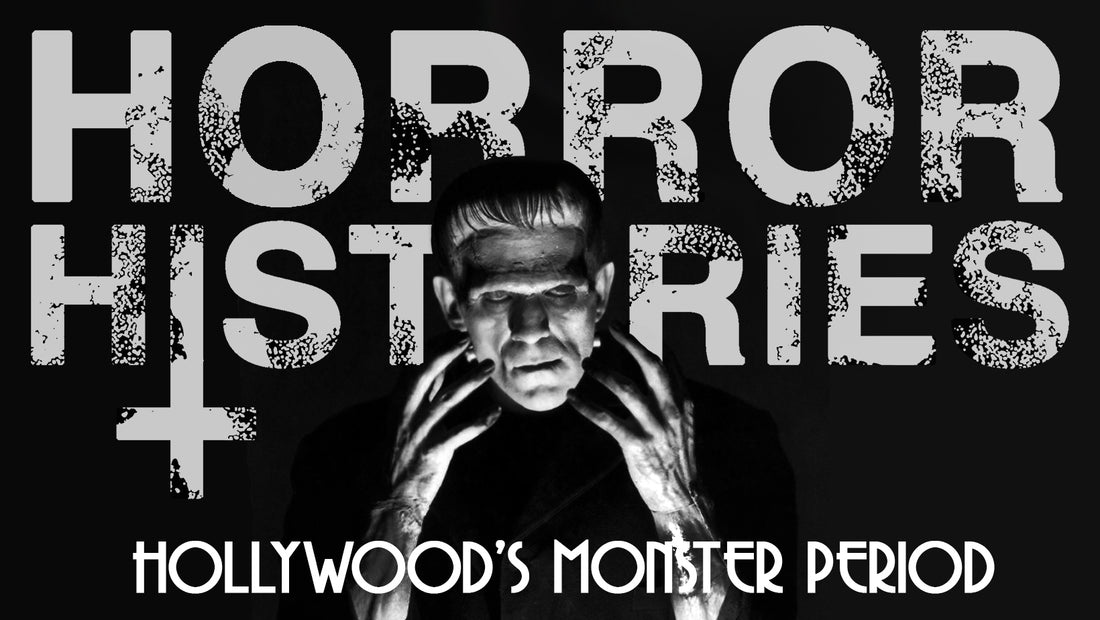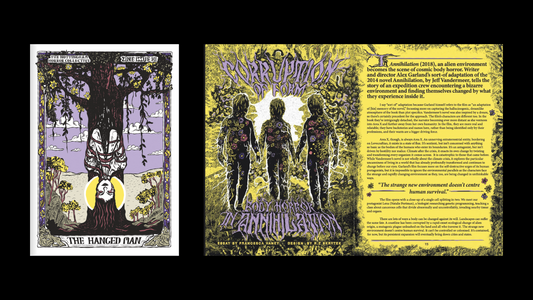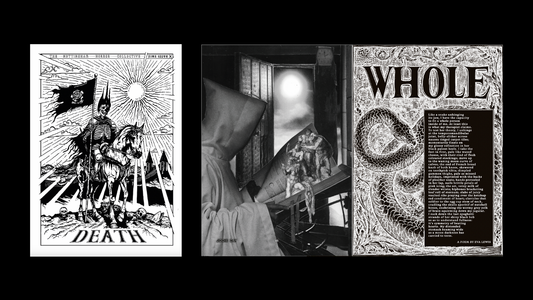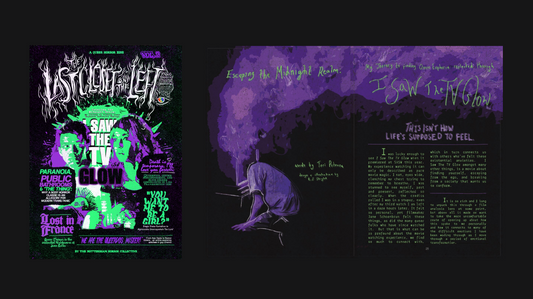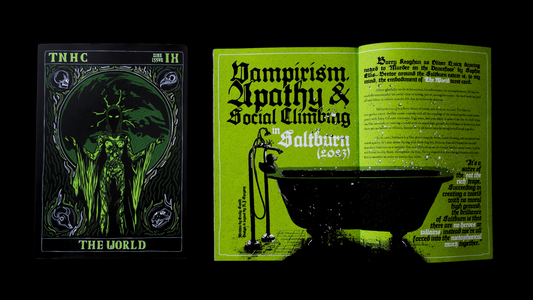By TNHC's Editorial Director, Emily Malone.
In cinematic history, no era casts a larger, more claw-fingered shadow than Hollywood's Monster Period. Universal Studios, sensing the tremors of a world evolving fearfully introspective, gave life to creatures that have since become the stuff of legend. From the haunting lure of Dracula to the misunderstood anguish of Frankenstein's Monster, these iconic figures are not mere horror tropes; they’re reflections of us.
The decade began in 1931 with the atmospheric entrance of Count Dracula. Directed by the visionary Tod Browning, Dracula's gloomy, gothic mise-en-scène epitomised the unspeakable allure of the undead. Bela Lugosi, a Hungarian immigrant, wasn't initially the studio’s first choice, but became so iconic in the role that he was typecast for the rest of his career.

His accent and cadence were his own contributions, setting the archetype for Dracula's portrayal in many adaptations to come. In the context of 1930s America, with stringent immigration restrictions and fears of foreign ideologies, the Count's thirst for blood and ability to 'infect' resonated with concerns about 'outsiders draining American resources and spreading 'contagious' beliefs'. This foreign, seductive figure tapped into the society's simultaneous fascination and fear of the unknown.

In the very same year, Frankenstein burst onto the scene, directed by James Whale. Though it took liberties from Mary Shelley's seminal novel, it introduced iconic elements that have since become synonymous with the tale. Boris Karloff's depiction of the Monster, with Pierce's groundbreaking makeup design, rendered the creature as an emblem of existential sorrow and isolation.
The narrative of "Frankenstein" also delved deep into the murky waters of ethics. Dr. Frankenstein's desire to breathe life into the lifeless touched upon humanity's ambition to defy natural boundaries. But with this defiance came consequences. The Monster's very existence posed a question: just because we can achieve something, does it mean we should? The ramifications of Dr. Frankenstein's experiment made audiences grapple with the dangers of unchecked ambition and the moral responsibility of playing God.

Then, Bride of Frankenstein arrived in 1935. With Whale once again at the helm, the film, with its unique blend of horror and dark comedy, explored the tragedy of creation and the expectations thrust upon it. Just as Frankenstein's Monster grapples with his own existence, the Bride faces society's anticipations and pressures, which in many ways mirrored queer struggles with societal expectations.
It's hard not to empathise with the Bride's visceral resistance to being defined by her creation and her intended role. She didn't ask to be brought into existence, yet she's immediately assigned a purpose and a partner, paralleling the stringent roles often assigned by society based on gender, race, or sexuality.
Through the lens of James Whale's own experience - a man unapologetically open about his homosexuality in a less accepting time - the narrative takes on even more layers. The film's gay subtext, subtle yet unmissable, felt like a bold move, a reflection of Whale's personal journey and a comment on society's norms. It's personally heart-wrenching to watch the Bride, an emblem of defiance, resist the confines of her intended purpose.

Shortly after, The Mummy, wrapped in linen, embodied the timeless grip of love and destiny. It capitalised on the contemporary Western obsession with Egyptology, with audiences captivated by the resurrection of ancient curses and the allure of the forbidden.
The film tapped into Western society's fascination with Egyptology, spurred by the recent discovery of King Tutankhamun's tomb. This discovery wasn't merely an archaeological milestone; it was a cultural phenomenon that sent ripples through society, reawakening our collective allure for the forbidden and the ancient. "The Mummy" cleverly tapped into this pulse, weaving a narrative that played on society's deepest fears and most passionate fantasies.

A howl in the dark heralded the entry of The Wolf Man. Larry Talbot's transformation into the Wolf Man was nothing short of mesmerizing. The painstakingly detailed metamorphosis, characterised by groundbreaking effects and makeup, wasn't just a display of cinematic prowess but also a symbolic representation of an age-old conflict: the battle between man's primal urges and the civilizing influence of society.
Each transformation, each howl, and each act of primal violence manifested the turbulence of a man ensnared in the crossroads of his human and beastly instincts. And the allegory wasn't lost on the audience. The Wolf Man became a mirror reflecting our own inner battles. In Larry Talbot's desperate attempts to grapple with his newfound violent nature, I, and undoubtedly many others, discerned the echoes of our own struggles: the push and pull between societal expectations and the untamed, sometimes destructive, impulses lurking within.

Then, we have The Phantom of The Opera, a story about the deep-seated human fear of rejection and the lengths to which a soul, burning with passion, might go to secure a fleeting moment of affection or recognition. The essence of the tale - love unreciprocated and a life spent in the shadows, yearning for acceptance - has an eternal resonance, echoing our own fears and desires.
A significant element that heightened the film's allure was the commitment of its lead, Lon Chaney. The dedication with which he approached the role of the Phantom was almost obsessive in its intensity. The lengths to which he went to bring authenticity to his portrayal were legendary, even to the point of enduring physical pain.
There were countless rumors of the self-inflicted torture techniques Chaney employed - using wire devices to grotesquely distort his eyes and nostrils. And this dedication to the role added a layer of mystery and anticipation to the film. The secrecy surrounding his transformed appearance ensured that audiences would gasp in horror and fascination at the film's premiere, making the reveal one of the most iconic moments in cinematic history.

The Invisible Man's descent into madness is a chilling representation of the dangers of unchecked authority and the implications of possessing power without accountability. To the audiences of the time, this story wasn't just a fictional tale of horror; it held a mirror to their own world.
The early 20th century was a period of rapid technological advancements. From the wonders of electricity to the marvels of motorized transport, the world was transforming at an unprecedented pace. But with such wonders came fears – the dread of the unknown and the unforeseen consequences these technologies could unleash.
In "The Invisible Man," audiences saw parallels to their own lives. The unchecked use of a groundbreaking drug leading to invisibility mirrored society's grappling with new technologies and the potential misuses. There was a growing recognition that while these advancements promised better lives, they also came with the threat of misuse, and in the wrong hands, could lead to chaos and devastation.

Finally, from the murky depths, The Creature From the Black Lagoon emerged. More than just the emergence of a new monster, the film delved deep into the recesses of human psychology and our complex relationship with the mysteries of the natural world. At the core of this cinematic masterpiece is the Gill-man. More than just a monster, the creature is a testament to the wonders and horrors of evolution.
But the true genius of the narrative lies not in the creature’s otherworldliness, but in the human response to its existence. It encapsulates a range of human emotions: from insatiable curiosity to fear, from the urge to study to the impulse to destroy. It's worth noting that while the Gill-man was undoubtedly the antagonist, the creature also evoked sympathy. Its territorial aggression was a natural response to human intrusion, making the audience question: Who is the real invader? Is the creature defending its home not reflective of nature's larger fight against human encroachment?
Collectively, these figures from Universal Studios are not just staples of horror. They’re symbols of various facets of the human condition – love, ambition, isolation, duality, and the eternal battle between nature and nurture. As time rolls on and cinema evolves, these monsters remain timeless, reminding us that within every shadow, there's a tale waiting to be told, and within every monster, there's a reflection of our very own souls.
